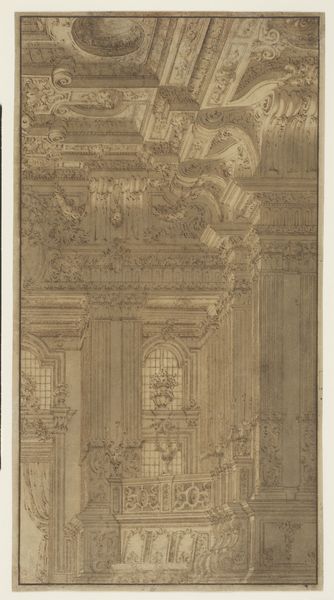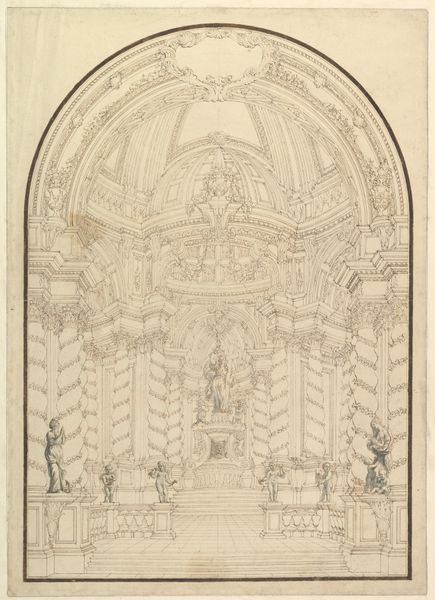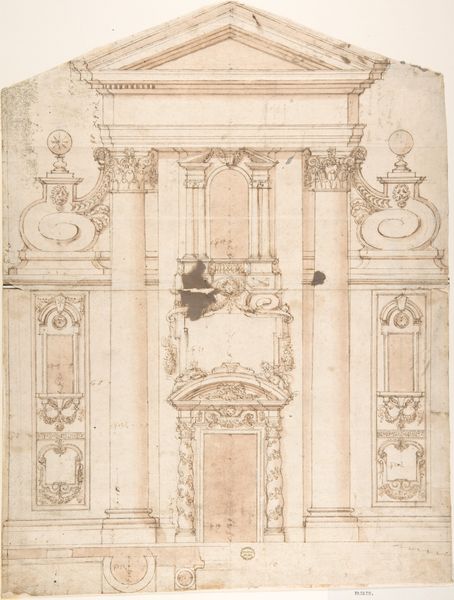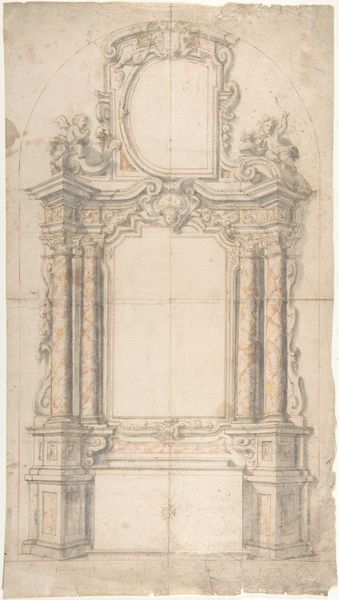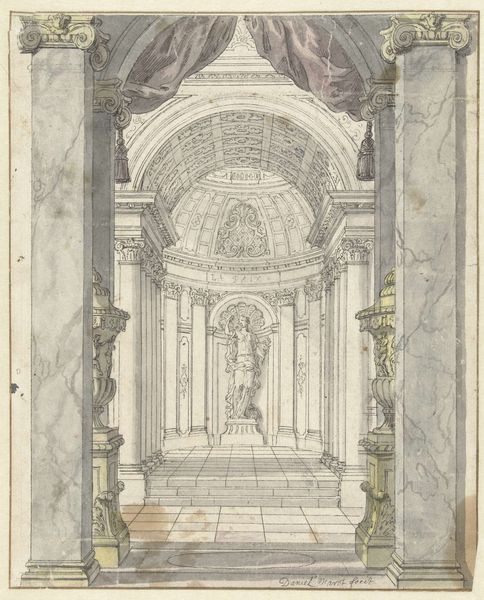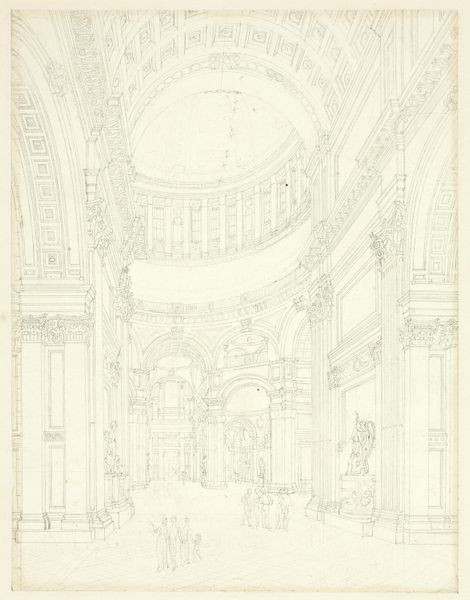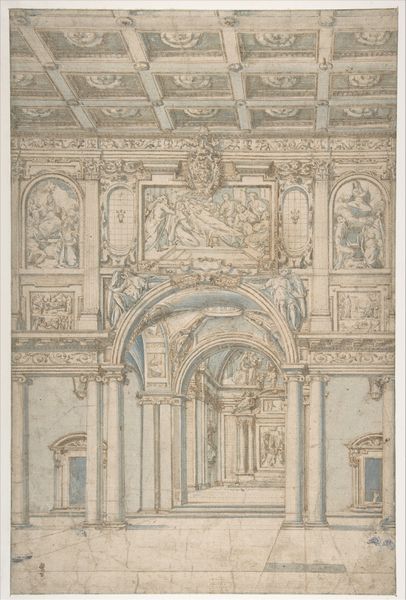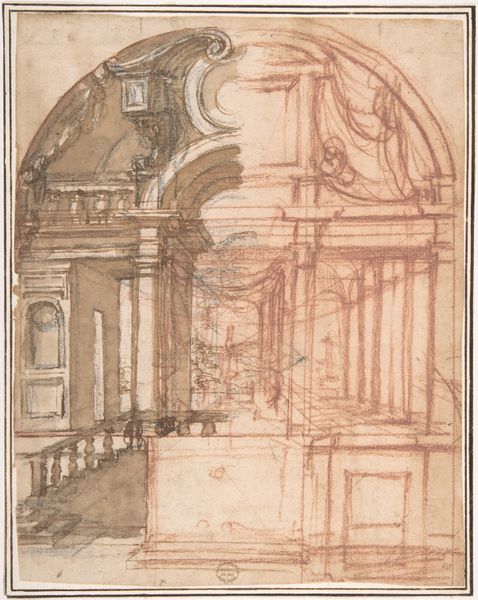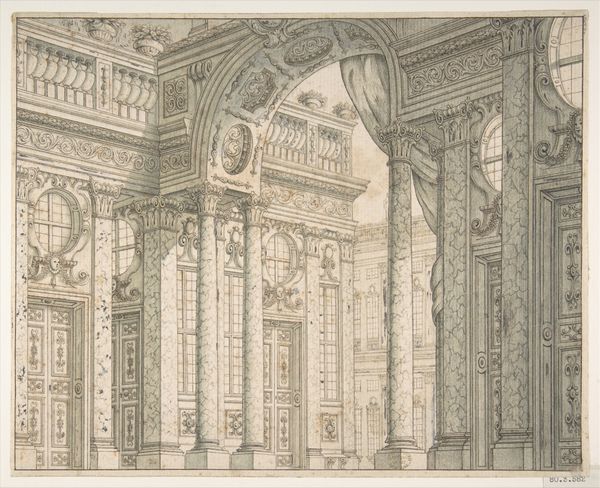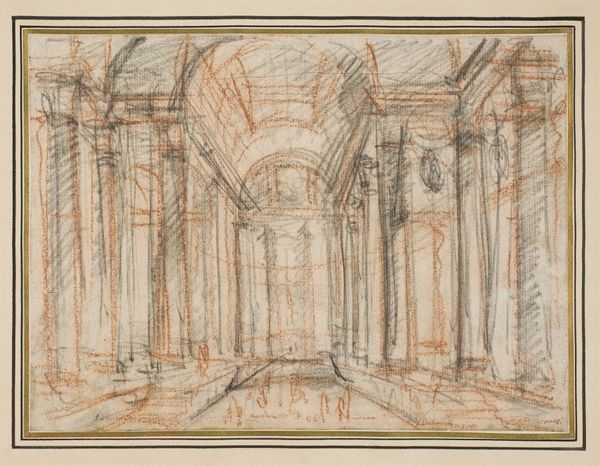
Design for a Painted Wall Decoration: Architectural Perspective Seen Through an Arch 1700 - 1780
0:00
0:00
drawing, coloured-pencil, print, paper, watercolor, pencil, architecture
#
drawing
#
coloured-pencil
# print
#
perspective
#
paper
#
watercolor
#
coloured pencil
#
pencil
#
architecture
Dimensions: sheet: 17 15/16 x 11 1/4 in. (45.5 x 28.5 cm)
Copyright: Public Domain
Curator: This drawing, "Design for a Painted Wall Decoration: Architectural Perspective Seen Through an Arch," made between 1700 and 1780, is an interesting case study of the interplay between drawing, painting and architecture. Editor: It's incredible how someone was able to give flat surfaces a three-dimensional effect with pencil, colored pencil, and watercolor on paper. What can we infer about the creation of the image from the medium itself? Curator: Notice how the medium allows for the relatively easy transport of design. The use of colored pencil and watercolor implies a degree of experimentation and refinement possible before translating the design onto a wall. Who had the power to determine this design and employ its maker? The architecture is presented as illusion, ready for capitalist production of luxurious and even propagandistic interiors. Does the sketch give us any insight into where the artwork might appear? Editor: From my point of view, it would most likely be in an affluent place, due to its sheer elegance, elaborate architecture and many costly architectural supports, and the presence of stairs suggests it's in a massive manor of sorts. How would they decide which surface to embellish with this scene? Curator: Well, the 'painted wall decoration' itself becomes a commodity, doesn’t it? The labor involved, from drafting to execution, and the cost of materials - even pigments themselves were luxurious goods- positions this work within a specific social and economic framework. Consider the value judgements present within architectural decoration, particularly regarding high art. Editor: It’s amazing to think about all the layers of production that go into a work like this. What have you learned from thinking about the material processes, or how does that change your thinking? Curator: Examining the material choices provides insights into the power dynamics, economic structures, and aesthetic values prevalent at the time, which influences not only artistic expression but shapes society itself.
Comments
No comments
Be the first to comment and join the conversation on the ultimate creative platform.

